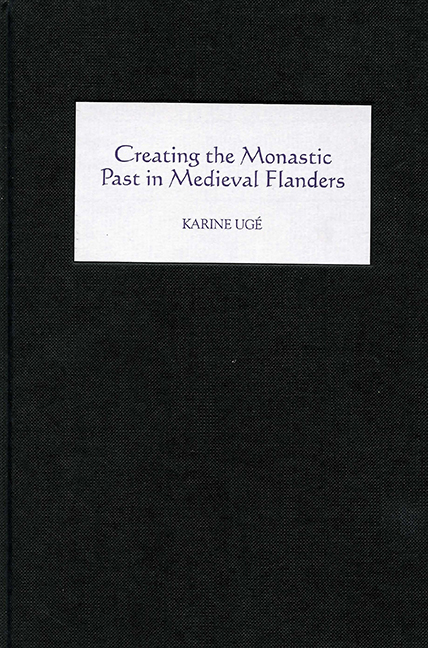Book contents
- Frontmatter
- Contents
- Acknowledgements
- Abbreviations
- Maps
- Genealogies
- Introduction
- Part I Saint-Bertin
- Part II The Hagiographic Cycle of St Rictrude
- 4 St Rictrude, her Family and the Abbey of Marchiennes (c. 640–1130)
- 5 St Maurontus and St Amatus at Douai
- Conclusion
- Bibliography
- Index
- Miscellaneous Endmatter
5 - St Maurontus and St Amatus at Douai
from Part II - The Hagiographic Cycle of St Rictrude
Published online by Cambridge University Press: 12 September 2017
- Frontmatter
- Contents
- Acknowledgements
- Abbreviations
- Maps
- Genealogies
- Introduction
- Part I Saint-Bertin
- Part II The Hagiographic Cycle of St Rictrude
- 4 St Rictrude, her Family and the Abbey of Marchiennes (c. 640–1130)
- 5 St Maurontus and St Amatus at Douai
- Conclusion
- Bibliography
- Index
- Miscellaneous Endmatter
Summary
Introduction
From the eleventh century, the canons of the collegiate church of Saint-Amé at Douai were claiming possession of St Amatus's and St Maurontus's relics. As we have seen in the previous chapter, these saints originally belonged to St Rictrude's cycle and were commemorated at the abbey of Marchiennes. In this chapter, I will examine how the canons of Douai legitimized their appropriation of Amatus's and Maurontus's relics by selecting the elements from Rictrude's cycle pertaining to their tutelary saints, by adapting these elements to their own interest, and finally, by integrating them within their own foundation legend. The fate of Amatus's and Maurontus's legends at Douai is interesting because their transformations by the canons allow us to investigate how a particular house's custom-built historical narrative could be appropriated by another community and adapted for its own ends.
The translation of St Amatus from his monastery of Breuil to the church of Douai, which prompted the foundation of the community of canons, was related for the first time in 1076, in a group of charters, or rather charternotices, dated 1076. These charters-notices were written at Saint-Amé itself, and sent for signature to the count of Flanders, Robert the Frisian, and the king of France, Philip I. This foundation story asserts that Arnulf the Great had brought the relics to Douai in the aftermath of his conquest of the city (c. 950). I have already underlined how positive as well as negative interaction between religious communities and secular power had an impact on these communities’ narrative production. This is especially striking in the case of the community of Douai. Indeed, the foundation story was written down in 1076, in the context of the bitter struggles which opposed the counts of Flanders and Hainault over the control of the city. We shall see that this troubled political context influenced both the time and the manner in which the community of Saint-Amé produced its own historiographical narratives. It is indeed not without significance that the foundation legend of Saint-Amé was related for the first time neither in a hagiographic text nor in a chronicle, but rather in charters ratified by the highest secular authorities of the time, the king of France and the count of Flanders.
- Type
- Chapter
- Information
- Creating the Monastic Past in Medieval Flanders , pp. 142 - 161Publisher: Boydell & BrewerPrint publication year: 2005

